Decorative and scented candles for every occasion
Candles made with passion
Safety When Lightening Candles - Essential Tips
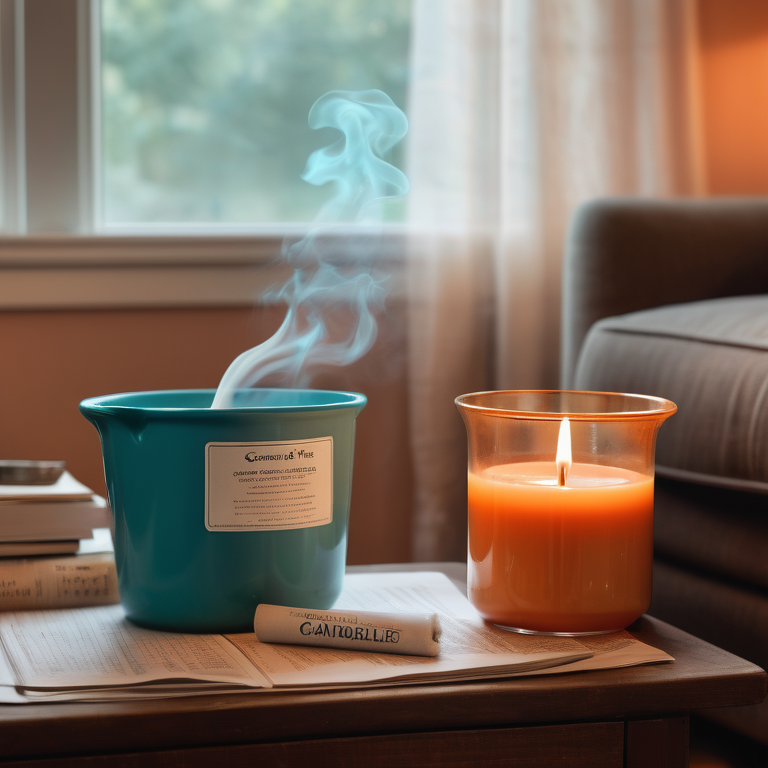
Key Highlights
Always place candles in a safe and secure location away from flammable objects
Follow proper candle lighting and extinguishing techniques to prevent accidents
Use candles made from high quality materials
Regularly monitor lit candles and know when to extinguish them
Keep candles out of reach of children and pets and never leave them unattended
Have clear understanding of basic candle safety practices to ensure a safe and enjoyable experience
Introduction
Candles are a popular and soothing addition to any home. They create a warm and inviting atmosphere, enhance relaxation, and provide an aromatic experience. However, it is important to prioritize safety when using candles to prevent accidents and ensure a peaceful environment. In this blog, we will discuss essential candle safety tips for home use, including the importance of using candles safely, different types of candles and their safety features, preparing your space for candle use, lighting candles safely, maintaining a safe environment while candles are lit, and how to properly extinguish candles. By following these safety guidelines, you can enjoy the ambiance and fragrance of candles while keeping your home and loved ones safe.
Understanding Candle Safety Basics
Candles may seem harmless, but they can pose risks if not used properly. It is crucial to understand some basic candle safety practices to prevent accidents and potential fire hazards. Always keep candles in a safe place away from flammable objects such as curtains, papers, or decorations. Avoid placing candles near drafts or in areas where they can be knocked over. It is also essential to use candles in a safe manner by following recommended lighting and extinguishing techniques. By being mindful of these basics, you can enjoy the beauty and ambiance of candles without compromising safety.
The Importance of Using Candles Safely at Home
Using candles safely at home is of utmost importance to ensure the well-being of your family and the protection of your property. By following proper candle safety practices, you can minimize the risk of fire accidents. Always remember to place candles in a safe manner, away from flammable materials and in a stable position. Trim the wick to a safe length before lighting the candle and avoid burning candles for extended periods. It is also crucial to never leave a burning candle unattended and keep them out of reach of children and pets. By practicing these safety measures, you can enjoy the cozy atmosphere of candles while prioritizing fire safety.
Preparing Your Space for Candle Use

Before lighting a candle, it is important to prepare your space to minimize the risk of accidents. Here are some tips for preparing your space for candle use:
Choose a safe surface: Place candles on a heat-resistant and stable surface to prevent them from tipping over.
Clear the area: Remove any flammable materials or decorations from the vicinity of the candle.
Ensure proper ventilation: Avoid using candles in enclosed spaces without proper ventilation.
By taking these precautions, you can create a safe environment for candle use in your home.
Choosing the Right Surface for Candles
Selecting the right surface for your candles is crucial for ensuring their stability and minimizing the risk of accidents. Here are some factors to consider when choosing a surface for candles:
Heat resistance: Opt for surfaces that can withstand the heat generated by the candle flame, such as ceramic or metal.
Stability: Choose a surface that is flat and stable to prevent the candle from tipping over.
Candle jar: Consider using candles housed in jars, as they provide an added layer of safety by containing the flame and preventing accidental spills.
By selecting a safe surface and utilizing candle jars, you can enjoy the ambiance of candles while keeping your home safe.
Keeping Candles Away from Flammable Objects
One of the most important candle safety practices is keeping them away from flammable objects. Here are some tips to ensure a safe distance between candles and potential fire hazards:
Maintain a safe distance: Keep candles at least one foot away from any flammable materials such as curtains, fabrics, or decorations.
Clear the area: Ensure that there are no loose papers, books, or other objects that could accidentally come into contact with the flame.
Avoid drafts: Place candles away from windows, vents, or areas with drafts, as this can cause the flame to flicker and increase the risk of fire.
By being mindful of these precautions, you can prevent accidents and promote fire safety in your home.
Safety When Lightening Candles - Tips
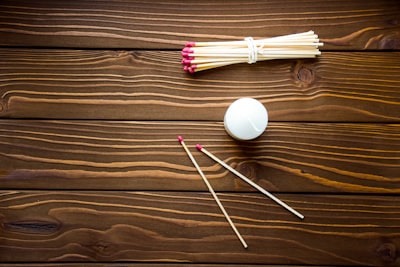
Properly lighting candles is crucial to prevent accidents and ensure a safe burning experience. Here are some tips for lighting candles safely:
Trim the wick: Before lighting the candle, trim the wick to a safe length of about 1 cm (please always refer to the manufacturers' recomendations).
Use a lighter or match: Light the candle using a long-handled lighter or match, ensuring your hand is a safe distance from the flame.
Avoid touching the wick: Once the candle is lit, avoid touching the wick or blowing on the flame.
By following these safety guidelines, you can minimize the risk of accidents and enjoy the soothing glow of candles.
The Correct Way to Light a Candle
To ensure a safe and proper lighting of a candle, follow these steps:
Trim the wick: Trim the wick to approximately 1cm before lighting the candle to prevent excessive flickering and uneven burning.
Use a lighter or match: Use a long-handled lighter or match to light the candle. Hold the flame to the base of the wick until it ignites.
Avoid touching the wick: Once the candle is lit, refrain from touching the wick to avoid burns or accidental extinguishing of the flame.
By following these steps, you can safely light your candles and enjoy their warm glow.
Tools and Accessories for Safe Candle Lighting
There are several tools and accessories that can assist in safe candle lighting. Here are some options:
Candle Lighter: Use a long-handled candle lighter to reach deep-set wicks without the risk of burning your fingers.
Matches: Opt for long matches to ensure a safe distance between your hand and the flame.
Wick Trimmer: Invest in a wick trimmer to easily trim the wick to a safe length before lighting.
Candle Snuffer: Tool used to extinguish candles safely and efficiently. It typically consists of a small cone or bell attached to a handle. When the candle is ready to be put out, the snuffer is placed over the flame, cutting off the oxygen supply and causing the flame to go out without any smoke or splatter. Using a candle snuffer not only prevents wax from spattering but also helps in maintaining a clean and smoke-free environment. Additionally, it adds an elegant touch to the act of extinguishing candles, making it a popular accessory for both practical and aesthetic purposes.
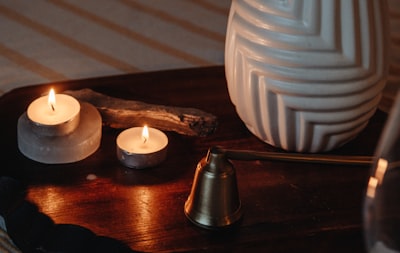
By using these tools and accessories, you can ensure safe candle lighting practices and minimize the risk of accidents.
Maintaining a Safe Environment While Candles Are Lit
While candles are burning, it is important to maintain a safe environment to prevent accidents. Here are some tips for maintaining a safe environment while candles are lit:
Never leave candles unattended: Always keep an eye on the lit candles and never leave them burning when you leave the room or go to sleep.
Keep candles out of reach: Ensure that candles are placed in areas where they are inaccessible to children or pets.
Monitor the flame: Regularly check the flame to ensure it remains a safe size and is not flickering excessively.
By practicing these safety measures, you can enjoy the ambiance of lit candles while prioritizing a safe environment.
Monitoring Candles for Safe Use
Regularly monitoring lit candles is essential to ensure their safe use. Here are some tips for monitoring candles:
Check for even burning: Monitor the candle to ensure that it is burning evenly and not creating a large, uneven wax pool.
Extinguish if necessary: If the flame becomes too large or flickers excessively, extinguish the candle to prevent accidents.
Keep away from drafts: Be mindful of any drafts that may affect the flame's stability and adjust the candle's placement if necessary.
By actively monitoring the candle's burning behavior, you can identify any potential safety risks and take appropriate measures.
Recognizing When to Extinguish Candles
Knowing when to extinguish candles is crucial for maintaining a safe environment. Here are some situations in which it is recommended to extinguish candles:
Low wax level: When the wax level reaches approximately 15mm (1/2 inch), it is advisable to extinguish the candle to prevent the flame from reaching the container.
During a thunderstorm: It is best to extinguish candles during a thunderstorm to eliminate any potential fire hazards.
Before leaving the room: When leaving a room, always extinguish candles to prevent accidents in your absence.
By recognizing these situations, you can practice proactive candle safety and minimize the risk of accidents.
Extinguishing Candles the Right Way
Properly extinguishing candles is essential to prevent accidents and ensure a safe burning experience. Here are some tips for extinguishing candles the right way:
Use a snuffer: Use a candle snuffer to gently extinguish the flame by covering it with the snuffer's bell-shaped end.
Avoid blowing out the flame: Blowing out the flame can cause hot wax to splatter or create an unsafe environment.
Double-check the wick: After extinguishing the flame, ensure that the wick is upright and centered to prevent any potential fire hazards.
By following these tips, you can safely extinguish candles and maintain a safe environment in your home.
Tools for Safely Putting Out Candles

There are several tools available that can assist in safely extinguishing candles. Here are some options:
Candle Snuffer: Use a candle snuffer to gently extinguish the flame without blowing or splattering hot wax.
Wick Dipper: A wick dipper can be used to extinguish the flame by carefully dipping the wick into the melted wax and then quickly pulling it back up.
Candle Lid: If your candle comes with a lid, use it to extinguish the flame by placing it over the candle jar.
By using these tools, you can safely and effectively extinguish candles without creating any potential hazards.
Common Mistakes to Avoid When Extinguishing Candles
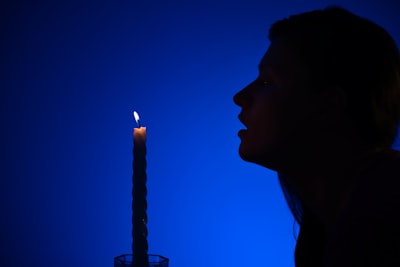
Avoiding common mistakes when extinguishing candles is crucial for ensuring a safe environment. Here are some mistakes to avoid:
Blowing out the flame: Blowing out the flame can cause hot wax to splatter or create an unsafe environment. Always use a snuffer or other extinguishing tool.
Moving a recently extinguished candle: Do not move a candle immediately after extinguishing the flame, as the wax may still be hot and easily spill.
Forgetting to double-check the wick: After extinguishing the flame, ensure that the wick is upright and centered to prevent any potential fire hazards.
By being mindful of these mistakes, you can practice safe candle extinguishing techniques and prioritize a safe environment.
Safety when lightening candles - Conclusion
In conclusion, practicing candle safety at home is crucial to prevent accidents. Understanding the basics, choosing the right surfaces, and monitoring candles while lit are essential steps. Always extinguish candles properly using the right tools and avoid common mistakes. Be cautious with wax spills and never leave a burning candle unattended. Creating a safe environment for candle use ensures a cozy ambiance without compromising safety. Remember, a little care goes a long way in enjoying the warmth and glow of candles in your living space.
Frequently Asked Questions
What to Do if Wax Spills on Furniture?
If wax spills on furniture, it is important to handle it in a safe manner. Allow the wax to harden, then carefully scrape it off the surface using a blunt object. For any residue, use a cloth dampened with warm water and mild soap to gently clean the area. Avoid using harsh chemicals that may damage the furniture. If the wax is stubborn, consult a professional for advice on safe removal. Soy wax spills are generally easier to clean than other types of wax due to its lower melting point.
How should I properly extinguish a candle to ensure safety?
To properly extinguish a candle and ensure safety, use a snuffer or other extinguishing tool to gently cover the flame and suffocate it. Avoid blowing out the flame, as it can cause hot wax to splatter. Double-check that the wick is upright and centered after extinguishing to prevent any potential fire hazards.
Can I leave a candle unattended while it is burning?
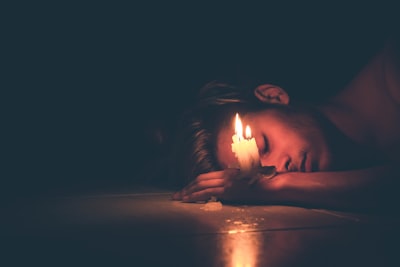
It is highly recommended not to leave a candle unattended while it is burning. Always monitor the candle and ensure it is in a safe place away from flammable objects, drafts, and the reach of children or pets. It is better to be safe and extinguish the candle before leaving the room.
Are there any specific locations in my home where candles should not be used?
Candles should not be used in areas where there is a high risk of fire or where flammable materials are present. Avoid placing candles near curtains, fabrics, or decorations that could easily catch fire. Additionally, avoid using candles in poorly ventilated areas to prevent the accumulation of smoke or carbon monoxide. During a thunderstorm, it is advisable to refrain from using candles altogether to eliminate any potential fire hazards.